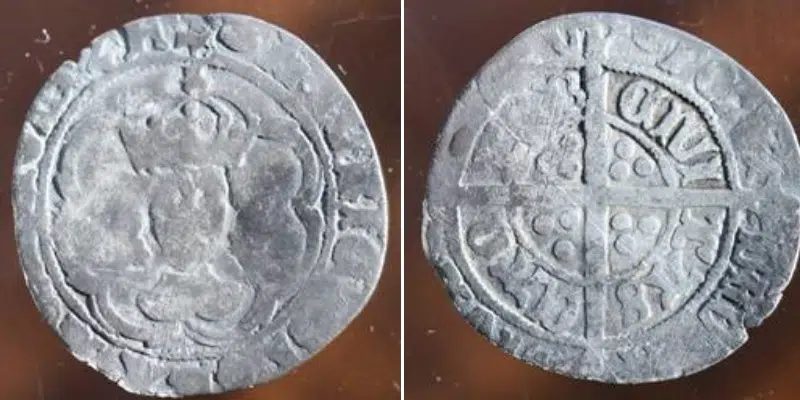A rare English coin, perhaps the oldest ever found in what is now Canada – and possibly North America – was unearthed this summer at the Cupids Cove Plantation site in Conception Bay.
The silver coin, has been identified as a Henry VII “half groat” or two-penny piece, minted in Canterbury, England sometime between 1493 and 1499.
The coin was positively identified in consultation with Paul Berry, a former curator of the Bank of Canada’s Currency Museum.
Twenty years ago, an Elizabethan coin, dated 1560 to 1561, was unearthed at the same site. At the time, the coin was considered the oldest English coin ever found in Canada. The coin discovered this summer is about 60 years older than that, and would have been in circulation for at least 111 years before it was lost at Cupids.
The Cupids Plantation site was formally established under John Guy in 1610.
The coin’s discovery was announced through the Department of Culture, Arts and Recreation this week.
Coin Likely Hoarded During Reign of Henry VIII
Site supervisor at the Cupids Cove Plantation, archaeologist, Bill Gilbert says it’s not unusual that a coin of that era would be in circulation over 100 years after it was minted.
Gilbert says that history was provided to him by Evan Jones, an economic historian at the University of Bristol in the UK.
He says the coins during Henry VII’s reign were over 90 per cent silver, but his son, Henry VIII devalued the silver, adding more copper to the coins, leaving only about 30 per cent silver. As a result a lot of the silver coins ended up getting hoarded away.
The silver in the old coins were actually worth more than the coin itself according to Gilbert.
He says it’s possible that the coin they found was held in a coin hoard somewhere in Bristol for a number of years, before it was once again released into circulation.























